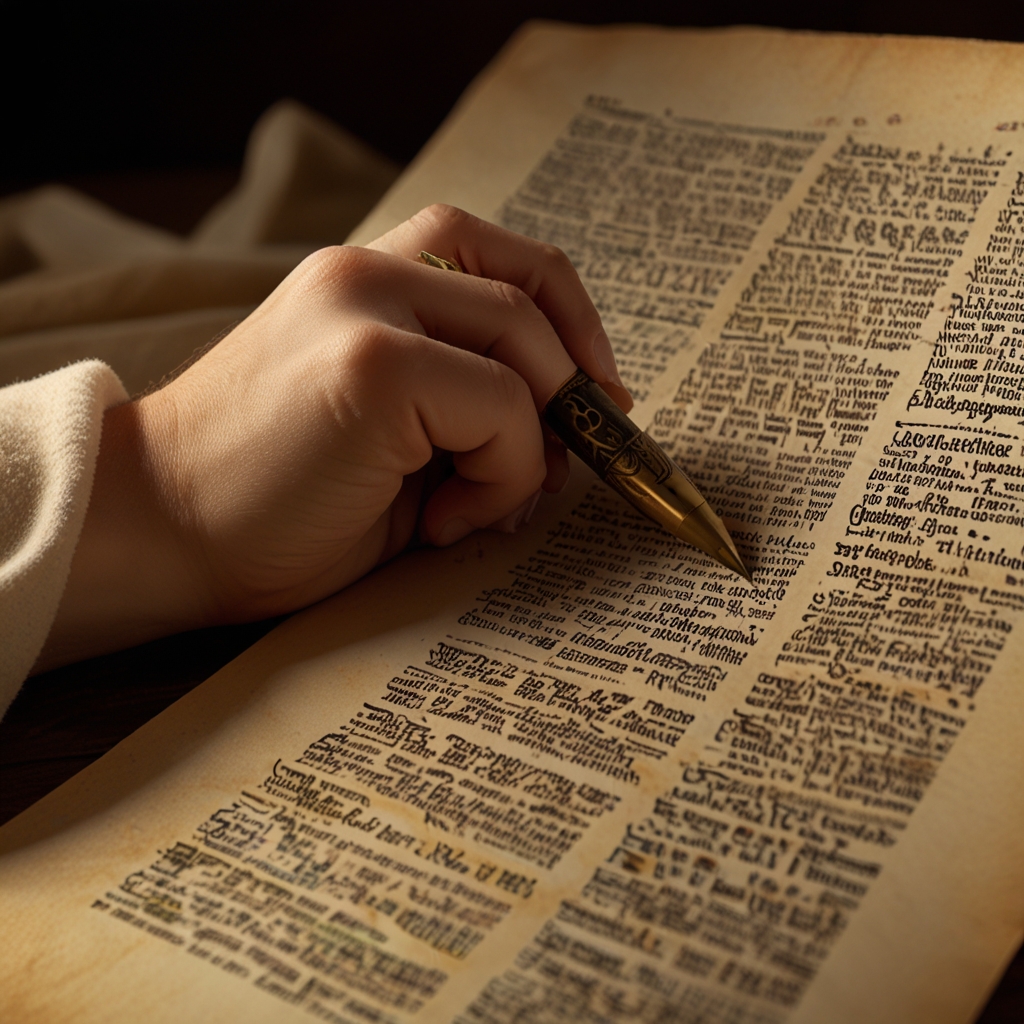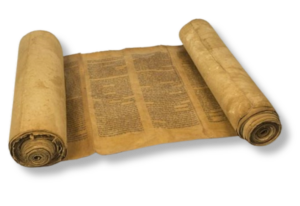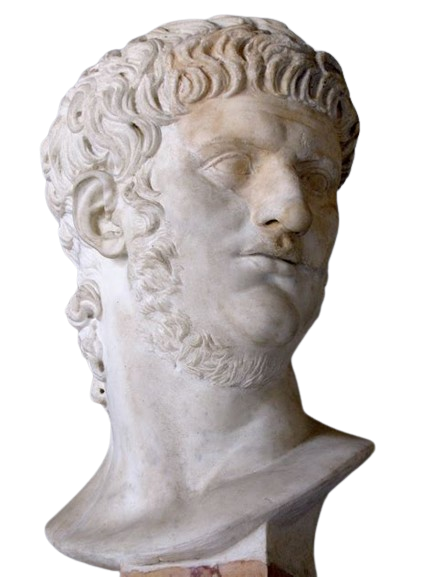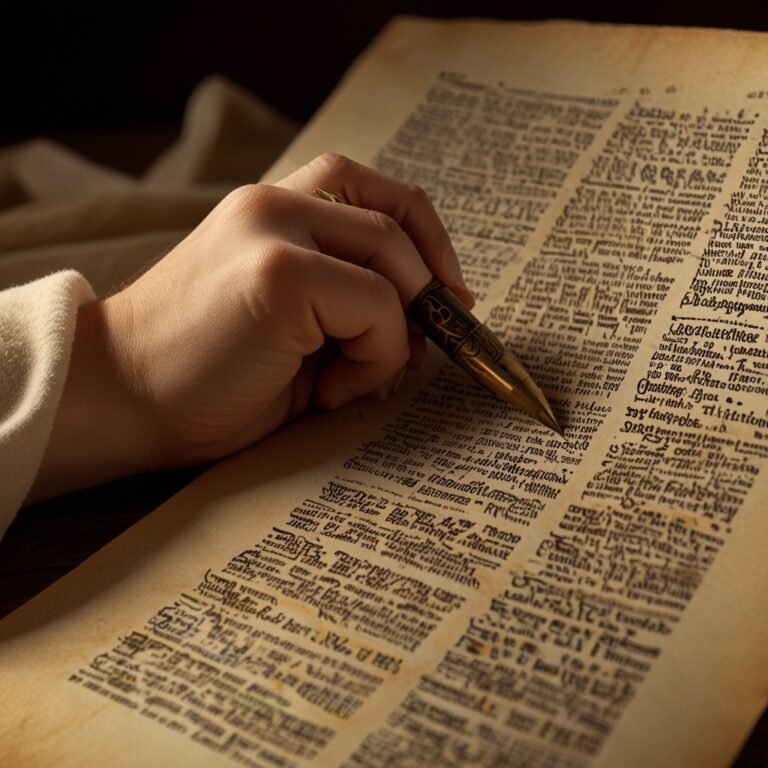

The Book of Revelation, also known as the Apocalypse of John of Patmos, was written near the end of the 1st century CE and is the only apokalypsis (Greek for “unveiling of unseen realities”) included in the New Testament canon.
Revelation is one of the few books in the Bible that is signed by its author. John opened the letter by stating his name and mentioning that he was in exile on the island of Patmos because of his Christian beliefs. We have few additional clues about his social and economic status. It’s possible that he was a Roman citizen, as most criminals were executed in the arenas, while citizens were given the milder punishment of forced exile.
Rome was generally tolerant of the local customs and religions of her subjugated peoples. However, the one thing the Empire wouldn’t tolerate was anything that smelled of sedition or rebellion. As we’ll see, jealousy and fear motivated Jewish leaders and the pagan community to mount false accusations against the growing group of Jesus’ followers, which in turn stirred up crowds to unrest and sometimes even violence.
For example, when Paul and his companions were preaching against paganism in Ephesus, the local guilds stirred up the populace against them:
Acts 19:28 When they heard this, they were furious and began shouting: “Great is Artemis of the Ephesians!” 29 Soon the whole city was in an uproar. The people seized Gaius and Aristarchus, Paul’s traveling companions from Macedonia, and all of them rushed into the theater together.
Rome began to react to this new sect, not because the Empire opposed the religion, but because of what they saw as disrupting to peace and order. In time, persecution began to escalate, and soon, any person caught preaching that Jesus was the Christ ran the risk of being arrested1.
John, one of the original twelve apostles (Matt 10:2), was no exception. Having faithfully preached throughout the provinces, he was eventually arrested, tried, and convicted. According to his own testimony, he was exiled to the Roman prison island of Patmos “Because of the word of God and the testimony of Jesus” (Rev 1:9). No one knows how long he suffered on Patmos, but he remained faithful and hopeful.
On the Lord’s Day, as John sat in prayer, his world was rocked! He writes:
Rev 1:9 … I was in the Spirit, and I heard behind me a loud voice like a trumpet…

That voice ushered in what was to become one of the most mysterious yet amazing prophetic writings found in the Bible. Many scholars believe that John experienced this vision during the reign of the Roman Emperor Nero (54-68 A.D.) and before the fall of Jerusalem in A.D. 70. According to Ignatius (martyred c. 117), for Christians, the Lord’s Day was Sunday.
For centuries, the vision that John saw has presented an immense challenge to its readers. The Revelation was written as a letter to be read by seven particular churches scattered throughout Asia Minor.
Rev 1:4 John, to the seven churches in the province of Asia: Grace and peace to you from him who is, and who was, and who is to come…
The letter identifies John as the author of the Revelation
Rev 1:1 Write on a scroll what you see and send it to the seven churches: to Ephesus, Smyrna, Pergamum, Thyatira, Sardis, Philadelphia and Laodicea.
Context is vitally important in the study of any Biblical passage. What were the Christian and pagan cultures like in these areas? What historical events molded and developed them over the centuries? What significant things occurred in history at the time of John’s writing?
John’s letter describing his vision was written primarily to a particular people in a unique time of history. Momentous historical events were sweeping the known world. Only as these historical and cultural circumstances are understood can the modern reader begin to comprehend the relevance those passages had for the ancient church as well as the current age.
Although John’s letter to the seven churches in Asia Minor shares some stylistic similarities with the other letters of the New Testament, it differs significantly in two important ways:
- John’s revelation, unlike any other New Testament letter, is written in an apocalyptic style. The Greek term, apokalupsis, (ap-ok-al’-oop-sis), means, disclosure, uncovering, or, revelation2.
- According to I Corinthians 14:3, the purpose of prophecy is to strengthen, encourage, and comfort the saints.
- The Revelation is prophetic and repeatedly affirms this fact:
Rev 1:3 Blessed is the one who reads the words of this prophecy…
Rev 22:7 “Behold, I am coming soon! Blessed is he who keeps the words of the prophecy in this book.”
Rev 22:10 “Do not seal up the words of the prophecy of this book…”
Rev 22:18 I warn everyone who hears the words of the prophecy of this book…”
Rev 22:19 “And if anyone takes words away from this book of prophecy…”
The Revelation given to John is the only letter dictated personally by Jesus (Rev 1:17-19). The first three chapters specifically address the circumstances of the seven churches in Asia Minor. Chapters 4 through 22 predict events, judgments, and rewards awaiting those churches and the world.
Which John Wrote the Revelation?

There was no question in the minds of most of the Early Church Fathers (those Church leaders who closely followed after the apostles) as to who the author of the Revelation was. Four times John identifies himself as the recipient of the vision (1:1, 4; 21:2; 22:8). Some of the earliest Fathers such as Justin Martyr (c. 165), Irenaeus (c. 180), Clement of Alexandria (c. 215) and Tertullian (c. 220), all wrote that the author of the Revelation was indeed, John, son of Zebedee, brother of James, and one of the original Apostles. Unlike many historians of the modern age, the Early Fathers also unanimously attributed the fourth gospel and three epistles to the same John.
John, the Presbyter (the Elder)
Dionysius of Alexandria (c. 200-264), and Eusebius (c. 260-340) church historian of the fourth century, both suggested that another “John” may have written down the Revelation as the Apostle dictated it. Eusebius recorded many quotes from Papias, a second-century Christian writer. This was fortunate, for none of Papias’ original works survive outside Eusebius’ Ecclesiastical History. From these passages, scholars have been able to piece together much of what we understand concerning the origins of the New Testament books. Eusebius quotes Papias as saying:
“…if I met with anyone who had been a follower of the elders anywhere, I made it a point to inquire what were the declarations of the elders. What was said by Andrew, Peter or Philip? What by Thomas, James, John, Matthew or any other of the disciples of our Lord. What was said by Aristion, and the presbyter John, disciples of the Lord . (Eusebius, History of the Church, Book 3, Chapter 39:4)
Eusebius continues:
It should be noted that twice Papias includes the name of John, the first listed with Peter, James, Matthew, and the apostles; the second in another non-apostolic group, putting Aristion first and clearly calling John a presbyter. This confirms the truth of the story that two men in Asia had the same name and that there are two tombs at Ephesus, each called John’s to this day. (History, 3:39.5)
It’s possible that the elders in Ephesus and other parts of Asia Minor wanted the aged Apostle to write down his eyewitness account of Jesus. John the Presbyter could have been the elder who penned the words of the fourth gospel as the aged Apostle dictated them. This might explain the contrast in style between the Epistles of John and the Revelation, which has led many scholars to believe the letters were written by different authors. It could also be another explanation as to why the letters refer to John in the third person.
Many commentators on the Revelation find an obvious difference between the Greek used in John’s Gospel and the three Epistles, as well as the grammar used in the Revelation. They agree that the grammar in the Revelation is far inferior to that of the other documents attributed to the Apostle. Moulton observed, The Gospel and epistles of John exhibit a good literary Greek style, whereas, Revelation’s ‘grammar’ is perpetually stumbling, its idiom is that of a foreign language, its whole style that of a writer who neither knows nor cares for literary form3.
However, defenders of the Apostle’s authorship point out that John is described in Acts as “unschooled.”
Acts 4:13When they saw the courage of Peter and John and realized that they were unschooled, ordinary men, they were astonished and they took note that these men had been with Jesus.
The polished style of the Gospel of John and 1st, 2nd, and 3rd John could be attributed to a scribe or the editorial efforts of the elders in the Ephesian church where John spent his last years. While on Patmos, the Apostle, if truly unschooled, could very well have penned the Revelation personally during the experience without benefit of a scribe.
Philip Schaff, in his History of the Church, writes:
In accounting for the difference between the Apocalypse and the other writings of John, we must also take into consideration the necessary difference between prophetic composition under direct inspiration, and historical and didactic composition, and the intervening time of about twenty years; the Apocalypse being written before the destruction of Jerusalem, the fourth Gospel towards the close of the first century, in extreme old age, when his youth was renewed like the eagle’s, as in the case of some of the greatest poets, Homer, Sophocles, Milton, and Goethe4.
Other literary similarities suggest the same author, if not the actual scribe, such as the Greek Logos, used as a term for Christ (John 1:1, Rev. 19:13), which appears nowhere else in the New Testament record, and the term The Lamb, as a messianic title (John 1:29, John 1:36; and throughout the Revelation).
When Was the Book of Revelation Written?

Most scholars have embraced two leading theories for the date of the Revelation. One places John’s vision during Nero’s reign (AD 54-68). This date lends credence to the theory that John’s message to the Churches was a warning of imminent state persecutions that started under Nero.
Bishop John Lightfoot (1601-1675), Philip Schaff (1819 –1893), and Foy E. Wallace Jr. (1896 –1979), are a few of those who favor this early date5.

Other scholars such as James Orr (1844 – 1913) began citing compelling evidence which pointed to Domitian‘s reign (AD 81-96). In either case, the prophecy was obviously sent to the Churches to bring encouragement and hope during a time of crisis. Persecution of believers by the Jewish and Roman communities had already begun during John’s lifetime, and the urgency of John’s images suggests that the vision was primarily addressing these tribulations.
Footnotes
- Acts 11:19; 13:50; Heb. 10:32. ↩︎
- Strong’s Greek, 602. ↩︎
- Moulton, J.H., Howard, W.F., and Turner, N., Grammar of New Testament Greek, 1908-1976, T. & T. Clark, Edinburgh Vol. 2, Part 1, page 3. ↩︎
- Philip Schaff, History of the Christian Church, Chapter 41, “Life and Character of John.” ↩︎
- Also, Moses Stuart, F. J. A. Hort, B. F. Westcott, and F. W. Farrar in the 19th century, and J. A. T. Robinson, R. A. Torrey, Albert A. Bell, C. F. D. Moule, and R.C. Sproul. ↩︎





